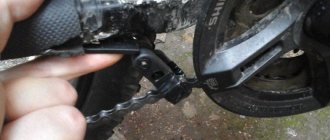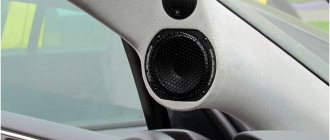Moscow
Saint Petersburg
Free consultation
They say that a person can get used to even the most strict, draconian, but permanent laws. And, on the contrary, he will feel uncomfortable with laws that are soft and sensible, but if their norms are constantly changing. The situation with safety islands on Russian roads today is similar to the second option.
Specifying everything, scheduling it, regulating it might not be a bad idea. But to change everything radically, while leaving the old norms in force, not directly pointing to sanctions, but issuing fines, confusing motorists so that they no longer understand where they can stop, and how exactly to navigate around these markings - this is not only a bad idea , these are direct problems for traffic.
However, there are car lawyers in the world! And few people manage to confuse this category of professionals who are ready to help figure it out. This article will be devoted to the difficulties associated with traffic islands (their standards and fines for violations).
Safety island and its functionality
According to traffic regulations, a traffic island is a section of the roadway on a dividing strip near a pedestrian crossing, where pedestrians can wait for traffic while crossing the road, as well as a means of separating/merging traffic flows. But, first of all, this is a safety zone specifically for pedestrians, where the rights of drivers are extremely limited. The island can be installed on the roadway, dividing strips, pedestrian zebra crossings, entrances to populated areas, at public transport stops, and roundabouts.
What it is? Definition
We will try not to sprinkle in legal terminology (although we absolutely cannot do without it), but to explain everything in a simple language that is accessible to most.
A traffic island is a place on a median or roadway in the area of a pedestrian crossing where pedestrians can wait to cross the road further.
This may be an area marked only by markings, or both markings and a curb (raised traffic island). In addition, there is GOST R 52766-2007 (regulates elements of the development of public roads), which sets separate standards. We'll talk about them in more detail below.
Let’s immediately make a reservation that we will not consider raised islands, and especially transitions in places equipped with fencing. Few people would think of driving or parking there. Our further task is to deal with the islands, indicated only by markings.
Moscow
Saint Petersburg
Free consultation
Moscow
Saint Petersburg
Possible controversial situations and ways to resolve them
Frequently asked questions from motorists related to the presence of traffic islands on the roadway:
- Is it permissible to stop on this section of the road? No, it is not permissible. The area is exclusively for pedestrians and is delimited by a solid white line. When stopping here, the driver breaks two rules at once: he crosses a solid road and parks on a zebra crossing.
- Is it permissible to run over such markings at the point where the flow merges or stop at it - no, it is not permissible. This area is considered an intersection and parking or stopping here is prohibited. Driving onto the island is prohibited due to the presence of a continuous line on its border.
- Whether there is a penalty for parking on an island located outside an intersection or a pedestrian crossing is not provided. But the traffic police inspector has the right to punish the driver for illegally crossing solid markings.
- Is there liability for the driver if he hits only one wheel while overtaking? Yes, it is provided for in the traffic rules. Automatic recording cameras (namely, they help to capture 90% of violations) are configured in such a way that they consider any crossing of a solid line to be a violation. Therefore, a fine will be imposed.
Controversial situations when crossing road markings
- Is it possible for a car to stop on a traffic island? No! Stopping in this place is prohibited, since this marking is designed for pedestrians who did not have time to leave the road section at the traffic light, which gave the right of way to the car. As you know, vehicles are prohibited from stopping at zebra crossings.
- Is it possible to run over and stop at a junction of traffic flow? No! If the island is located at a junction or branch of traffic flows, which can be considered an intersection. Accordingly, stopping at the intersection is prohibited by traffic regulations.
- Is it possible to stop on an island if it is located at a junction of traffic flows that are not at intersections? Yes! Traffic regulations do not prohibit stopping on a guide island. Consequently, the inspector does not have the right to punish the driver for violating the rules of stopping or parking. But, for violating the intersection of road markings, maybe! After all, crossing a solid line is prohibited.
- Is it possible to park a car on this section of the road? As for parking, you need to look at which island it is. The corresponding markings can be applied to the asphalt in the middle of the street, at a pedestrian crossing, at an intersection, as well as in places where traffic flows merge or separate on a multi-layer road. If the driver decides to park his car on this island, which is intended specifically for pedestrians, he will essentially be in the center of the pedestrian crossing.
- Responsibility for hitting a car with a wheel when overtaking. When overtaking another vehicle, one wheel is allowed to collide with the traffic island area.
What does it look like on the road and what is it used for?
In Appendix 2 to the traffic rules, the “safety island” is indicated by horizontal road markings 1.16.1 - 1.16.3, which are placed on the roadway in place. The purpose is as follows:
- 1.16.1 - serves to branch traffic flows;
- 1.16.2 - necessary for merging traffic flows;
- 1.16.3 - denotes islands at the confluence of traffic flows.
The following photo shows images of horizontal markings:
A safety island is marked by road markings in an area free from vehicle traffic and is intended for pedestrians to give them the opportunity to stop when crossing the roadway and not run across the road in front of oncoming vehicles.
On the road strip, the safety island is located in the form:
- area lined with curb stones above the roadway;
- zones designated by road markings;
- zones that are part of a pedestrian crossing;
- section of the dividing strip between traffic flows.
In Western Europe, buffer zones between traffic directions are mandatory on all streets with more than two lanes. With appropriate justification, when the width of the highway carriageway is 15 m or less, a traffic island with a width of at least 2 m can be constructed by narrowing the traffic lane to 3.25 m.
Islands can be arranged:
- at an unregulated crossing;
- at a controlled crossing;
- at an intersection where there is a roundabout;
- at the entrance to populated areas.
How the traffic island works:
- Forces drivers to comply with the established speed limit due to the fact that it visually narrows the roadway at the pedestrian crossing and increases the concentration of drivers.
- Makes it impossible for a car to enter the oncoming lane to overtake or get ahead.
- Excludes parking and stopping at the crossing and in its immediate vicinity.
- Creates physical protection for pedestrians, a place where they can safely wait for vehicles to pass, and people can rest.
- They allow travel at speeds of 40-60 km/h, and therefore can be used painlessly on streets and roads with heavy traffic. This is an advantage over raised road elements (hill, raised crossing, etc.).
- At intersections, the turning radius is reduced and the driver is forced to slow down.
Where to cross the road?
To carry out the intention to cross the roadway, a pedestrian is required to use pedestrian crossings.
On the road they are distinguished by corresponding signs in the shape of a square, inside of which there is a white triangle on a blue background; it depicts in black the silhouette of a pedestrian walking along a pedestrian crossing. To designate places designated for crossing, special markings are applied on top of the road surface in the form of solid stripes of white and (or) white with yellow filling, located along the axis of the road. This marking is called “zebra”. In exceptional cases, it is allowed to cross the road in places where it is clearly visible in both directions. You can only cross at an angle of 90 degrees to the edge of the road in the absence of a dividing strip and fences delimiting the flow of traffic from oncoming directions. On dangerous sections of roads, depending on the intensity of vehicle traffic, pedestrian crossings (underground and overground) are installed. Their locations are marked with road signs. Pedestrian traffic lights may be installed at crossings. In cases where there is no crossing at a pedestrian crossing, you can cross the road within the intersection where a person, as a traffic participant, has the right of way. However, in places where traffic regulation is carried out by a traffic controller and (or) a traffic light, people must be guided precisely by the signals that allow them to move. Diagonally - between the corners of an intersection located opposite each other - it is allowed to cross the road if there are markings indicating such a crossing, and only at a controlled intersection.
Can police cars be parked on islands?
Probably every driver has seen that traffic police officers often stand on these traffic islands, controlling traffic. Many jealously wonder why they can, but ordinary car enthusiasts cannot. Let's figure it out.
In their activities, traffic police officers are guided by the Administrative Regulations approved by Order No. 664 of the Ministry of Internal Affairs of the Russian Federation of 2022. Clause 87 of this document states that stopping a service vehicle must be carried out taking into account traffic rules and taking measures to ensure the safety of road users. At the same time, paragraph 88 of the regulations states that exceptions can be established if there is a need to carry out regulatory, administrative actions, suppress offenses, and prevent threats of harm to the health, life and (or) property of road users.
What is the fine and/or other punishment for driving on this road sign?
The Code of Administrative Offenses of the Russian Federation does not contain any directly prescribed punishment for traveling to a safety island. And on many websites you can read that holding a driver liable for hitting a traffic island has no legal basis. In reality this is not the case.
So is it possible to cross the islands? Our experts from the Legal.Center website have figured out this issue and are ready to give an answer.
Is it possible to drive into it and what will happen if it is driven over?
Entry to the traffic island 1.16.1 - 1.16.3 is possible only in emergency situations - car breakdown, unexpected stop due to breakdown, entry to avoid an accident, etc. situations. In all other cases, it will not be possible to avoid a fine.
The driver who ran into this road sign will be punished under Part 1 of Art. 12.16 Code of Administrative Offenses of the Russian Federation. If detected by an automatic fixation camera, the owner of the car will be fined 500 rubles. If a violation was discovered by a traffic police inspector, punishment in the form of a warning or a fine of 500 rubles is possible.
Many motorists will not agree with this punishment. Therefore, we asked the expert to comment on why liability is provided under this article.
Expert opinion Alexander Moskal Many years of experience in all areas of jurisprudence Let us turn to the above-mentioned National Standard of the Russian Federation GOST R 52766-2007. Paragraph 4.2.5.6 indicates that when placing an island on the roadway in front of it, a continuous inclined marking line 1.1 according to GOST R 51256 is applied on both sides, diverting traffic flows from the island (transition line), with an inclination to the road axis of 1:20 (1: 50).
As you know, road markings 1.1 are a solid line. And crossing a solid marking line is prohibited by traffic rules and is punishable in accordance with Part 1 of Art. 12.16 Code of Administrative Offenses of the Russian Federation.
×
The photo shows continuous marking 1.1:
Is it allowed to run over when turning or turning?
Crossing the traffic island when turning or turning is also prohibited. However, in this case, a violation can be issued under Part 2 of Art. 12.16. If detected by a camera, a fine of 1,000 rubles is imposed. If a violation was discovered by a traffic police officer - 1000 - 1500 rubles.
Stopping and parking on the triangle
This is the most confusing situation. In theory, the fine should be issued in accordance with Part 3 of Art. 12.19 Code of Administrative Offenses of the Russian Federation. Its size will be 1000 rubles. According to this article, parking is prohibited, since these markings are not intended for the movement and stopping of vehicles. On the traffic island, which is part of the zebra crossing, stopping and parking is strictly prohibited. Within the scope of a pedestrian crossing, a 10-meter zone on both sides is also not intended for these purposes.
In practice, sometimes traffic police officers issue a fine based on Part 4 and Part 5 of Art. 12.16. Administrative liability for these parts is 1,500 rubles or 3,000 rubles (for federal cities - Moscow and St. Petersburg).
Is it allowed to park and stop a car on the site?
The purpose of this zone is deciphered in its name, which implies the impossibility of stopping or parking vehicles in it.
In paragraph 12 of the Rules there is an exact list where a motorist can leave his vehicle, such areas include: the shoulder on the right or the edge of the roadway, as well as the shoulder on the left inside populated areas (subject to other conditions). This list does not include the traffic island, which means parking or stopping on it is illegal. In addition, the boundaries of this zone are marked by a solid line, crossing which is prohibited.
Thus, a driver who decides to take such an action may violate one of the traffic rules, each of which carries its own punishment:
Pedestrian traffic rules
The main question that interests pedestrians is whether they are required to stop at a traffic island.
Temporary cessation of traffic in this zone is possible when crossing an uncontrolled intersection in two steps. For example, elderly people or pedestrians with children can stop here, but there is no mandatory requirement to stop in this area.
Excerpts from paragraph 4 of the traffic rules related to this element:
- Before crossing the roadway, the pedestrian must make sure that his maneuver is safe. In the case of a traffic island, he will have to do this twice: on one edge of the roadway and in the specified area;
- It is prohibited to stay on the roadway for a long time and thereby cause difficulties on the road. An exception is cases where such a long stop is made for safety reasons;
- It is prohibited to wait for public transport on a traffic island.
Functions
First of all, traffic islands are designed to divide the road into two parts. In addition, they are areas where pedestrians can remain for any length of time. People crossing the roadway do not need to control the traffic flow from all sides.
In areas where there are no appropriate markings, accidents involving pedestrians most often occur. This is due to the fact that people do not always correctly assess the road situation and strive to cross life-threatening zones as soon as possible. The presence of islands allows you to cross half the roadway, stop and look around, and then continue driving if it is safe to do so.
These are the two main functions of markup. In addition, traffic islands in some cases force drivers to slow down. Sometimes markings are applied to narrow the traffic lane. Artificial unevenness often forms in such areas. In addition, road workers can install traffic lights. Thus, a driver approaching a dangerous area involuntarily reduces speed. Increasing the vigilance of a person driving a vehicle significantly reduces the risk of an accident.
Controversial situations
In some cases, drivers drive onto the island to avoid accidents. As a rule, after this they receive a decree by mail requiring them to pay a fine. However, in this case it is not at all necessary to part with money. Experts recommend contacting the traffic police at the territorial level and stating your vision of the situation. But even in this case, authorized persons do not always side with the offender. This is due to the fact that the traffic island is a pedestrian area. While avoiding an accident, the driver could hit a person crossing the roadway.
The situation regarding stopping on an island located outside intersections and pedestrian crossings is also controversial. The traffic rules do not say that parking in this area is prohibited. However, if in doubt, drivers should always pay attention to the markings. It's always solid. And crossing it is strictly prohibited.
It is important to know that in some cases a fine can be avoided. But at the same time, all arguments must be justified. If the driver proves that the safety island is placed in such a way that its presence, on the contrary, significantly increases the risk of an accident, a fine can indeed be avoided.
This can be emphasized if at least one of the following points is present:
- Signs were placed on the island that limited visibility.
- The markings did not meet the requirements. For example, no artificial lighting was provided in the immediate vicinity of it at night. Or the paint was erased or invisible under a layer of snow, dirt, etc.
- The island is not marked in accordance with traffic rules and state standards.
A competent approach in some cases will help avoid a fine. However, more drivers prefer not to waste their time and part with some money. In this case, you should remember that in the first 20 days you can pay the fine with a 50% discount.
Remember
- A safety island is made by markings or by raising it above the road.
- The island is needed to separate traffic flows and protect pedestrians on the wide road.
- The fine for crossing or turning around on an island is 500 rubles.
- The fine for stopping or parking on an island is 1,000 rubles.
- If the fine is not paid within 70 days, the fine will be handed over to the bailiffs, who will write off the amount of the fine from the account.
- To receive notifications about fines on time and pay fines at a discount, subscribe to notifications on the Traffic Police Fines website.
Penalties
Crossing a solid line will result in the confiscation of your driver's license. But a fine is imposed for a traffic island, the amount of which depends on the violation committed. The relaxation is related to the degree of negative consequences, of which, for example, on a highway there can be many.
According to the Administrative Code, the driver will have to pay 500 rubles to cross the island. As for check-in/check-out, in this case the violator also faces a fine. It is 1000 rubles. You will have to pay a fine of the same amount for parking.
Are the islands safe?
It is important for pedestrians to understand that this area is marked only by markings. White paint applied to the road surface cannot with a 100% guarantee protect a person from harm.
The situation is different in European countries. The islands there are equipped with barriers. If, for example, there is a drunk driver behind the wheel, the design will stop the car, thereby preventing a collision with a person. For the same reason, people driving vehicles are more attentive on the road and observe the speed limit at crossings.
In Russia, islands are not equipped with such barriers. Thus, in theory they are safe for pedestrians, but in fact they are not. And this is due to the ignorance of many drivers of traffic rules. In addition, numerous accidents in these areas occur due to irresponsibility. A prime example is driving while intoxicated.
Concept
Every road user is required to know, according to traffic regulations, that a traffic island is a section that is intended for pedestrians. In addition, it separates traffic flows in which cars move in opposite directions.
Safety islands are applied as markings on roads. If for some reason a pedestrian did not have time to cross the roadway, he can calmly wait in this area for a favorable situation for an unhindered crossing.
In Russia, safety islands are not so common. The situation is different in European countries. There are so many similar markings there that drivers inevitably begin to behave more disciplined and follow traffic rules.
What the traffic rules say about traffic islands
Marking 1.16.1 is a small island with lines written on it. They can be seen on sections of highways and city roads. They are often applied when the roadway narrows. If we talk directly about the traffic island, they are applied exclusively at pedestrian crossings, namely in the middle of it. This point is indicated in the definitions of traffic rules with number 2.42.
The island is designed for safe pedestrian crossing of the road. The presence of such an island is especially important on roads with 4 or more lanes. However, in many European countries they can be seen even on two-lane roads. In this case, they are designed to calm traffic; the driver does not have the opportunity to accelerate to high speeds on a narrow road. They are equipped with special lighting and sometimes a road sign. This reduces the accident rate and all related indicators, such as accident rates and the number of pedestrians hit.
Such markings indicate to the pedestrian where he can safely wait for the flow of cars or wait for the green traffic light. Safety islands are very convenient for older people and people with limited mobility who find it difficult to cross a road, especially one with 6 lanes at a time. With a traffic island, this can be done with some pause, while remaining in a safe place and without interfering with moving traffic.
Normative base
All issues related to traffic islands are regulated. The interpretation of this concept can be studied in the Traffic Regulations, specifically in the “Definitions” section, paragraph 2.42. Appendix 2 of the Rules describes marking options. The islands are a geometric figure whose sides are a solid line.
There are also certain rules in these areas. Violation of them entails administrative liability. This issue is regulated by the Code of Administrative Offenses, in particular, by Articles 12.16 and 12.19.
Penalty for entering, stopping and crossing a traffic island
This is where the main differences and difficulties begin. We have already clarified one problem - crossing a continuous strip (violation of markings - Part 1 of Article 12.16 of the Administrative Code). We will return to sanctions on it later, but for now we will consider other possible violations:
- Is it possible to park on a traffic island? Let us remember that the island is directly connected to the pedestrian crossing. stopping/parking (parking) on a pedestrian crossing (Parts 3 and 6 of Article 12.19 of the Code of Administrative Offenses), can be recognized as a second violation
- At the same time, sanctions may well be applied for parking “further than the right lane ,” which is provided for in Part 3.2 of the same article.
- Article 8.1 of the Russian Traffic Regulations prohibits turning around at a pedestrian crossing . Part 2 Art. 12.14 of the Code of Administrative Offenses of the Russian Federation establishes a fine for this (we’ll return to the exact figures below).
- Article 11.4 of the Russian Federation Traffic Regulations completely prohibits overtaking at a pedestrian crossing . These are relatively recent changes in the rules, and the Code of Administrative Offenses has not yet identified an exact article for the case. However, depending on the circumstances, either the already mentioned violation of markings (Part 1 of Article 12.16 of the Code of Administrative Offenses) or driving into oncoming traffic (Part 4 of Article 12.15 of the Code of Administrative Offenses) is applied.
The amount of fines depends on these conditions. Basically they are like this:
| Violation | Fine | Note |
| Violation of markings (Part 1 of Article 12.16 of the Administrative Code) | 500 rub. | This is how driving onto a traffic island can be interpreted, as well as the minimum penalty for overtaking on the traffic island. |
| Stopping/parking at a crossing (Part 3 of Article 12.19 of the Administrative Code) | 1,000 rub. | Attention: in case of similar violations that occurred in Moscow or St. Petersburg, Part 6 of this article applies - the fine will be 3,000 rubles. |
| Stop/parking “further than the first rad” (Part 3.2 of Article 12.19 of the Code of Administrative Offenses) | 1500 rub. | |
| U-turn at a zebra crossing (Part 2 of Article 12.14 of the Administrative Code) | 500 rub. | A U-turn on a traffic island can be equated to this. |
| Driving into the oncoming lane (Part 4 of Article 12.15 of the Administrative Code). | 5000 rub. or deprivation of rights for up to six months | In this way, the worst-case scenario for overtaking on a traffic island can be interpreted. |
In addition, in some circumstances, a cumulative method of punishment for several articles may be applied.
You need to understand that it is allowed to stop at the markings in the event of a technical malfunction of the vehicle or poor health of the driver.
Can a camera record this violation?
Overtaking, turning around, parking on a traffic island - all this can be recorded both by traffic police officers and with the help of cameras. Disputes often arise that the camera is not able to distinguish a stop from a parking lot, but in this case it does not matter - Part 3 (and therefore Part 6) of Article 12.19 of the Code of Administrative Offenses interprets sanctions for both types of this violation in the same way.
The problem may be due to a technical fault. It is not always possible to determine when the hazard warning lights are turned on in a photo. In this case, you will have to appeal the fine for leaving the traffic island.
How can the traffic police prove your guilt?
When drawing up a report on an offense, the traffic police officer must provide compelling evidence of what happened. As a rule, materials on the violation made using video or photography are attached to the case. The capabilities of modern technical devices make it possible to create an evidence base that illuminates the picture of the event with extreme clarity. If possible, the traffic police officer will certainly try to stock up on witness statements. To do this, directly at the place where the protocol was drawn up, eyewitnesses of the violation are asked to give testimony.
In large cities, violations of marking rules (crossing a traffic island) are recorded using automatic video cameras installed throughout the city. And in this case, the driver will receive the decision by mail in the form of a “chain letter”.
Traffic rules requirements
Traffic regulations state that a safety island marked with horizontal markings is most often limited on all sides by a solid line.
The purpose of the solid line is that it separates traffic flows moving in different directions and marks the boundaries of traffic lanes in high-risk areas. This means that any maneuvers on this island are strictly prohibited and are equivalent to driving into the oncoming lane .
Within this island, traffic is allowed only for pedestrians, and nothing is said about the fact that this is strictly prohibited for drivers. Therefore, the traffic island cannot be considered a roadway . The rules stipulate that the movement of vehicles is possible only in the lanes designated for this purpose and there is no prohibition for traffic on this island.
If the driver is moving in the zone where the traffic island is located on the side of the solid line, then it is prohibited to cross this zone. This applies to white markings 1.16.1 – 1.16.3, which:
- separate traffic flows in the opposite direction;
- separate traffic flows in one direction;
- indicate the confluence of traffic flows.
Marking
The safety island, as a rule, is an unequal triangle. It is applied to the road with white paint. It is important to know, according to traffic rules, that a traffic island is a marking that can have three image options. Each of them is numbered (1.16.1, 1.16.2, 1.6.3). The first option is applied to sections of the road in order to separate traffic flows moving in opposite directions. Marking 1.16.2 is intended for one-way carriageways. The third option is usually applied in areas where streams merge.
There are several markup requirements. It must be clearly visible to all road users. This area of the roadway must be illuminated and cleared of snow and dirt.
Definition in the traffic rules “Safety island”
The term is one of the most frequently used when it comes to traffic rules not only for motorists, but also for pedestrians. Therefore, in the “Basic Provisions” there is also a transcript of it, which helps to understand where this zone is located. In the traffic rules, a safety island is defined as follows:
...an element of road arrangement separating traffic lanes (including lanes for cyclists), as well as traffic lanes and tram tracks, structurally separated by curbstones above the carriageway or marked by technical means of traffic management and intended to stop pedestrians when crossing the carriageway . The traffic island may include part of the dividing strip through which a pedestrian crossing is laid.
There is a term along with its description in GOST R 52766-2007, which regulates the construction of roads and their components. Subclause 4.2.5.1 describes the specified zone as an element of the roadway, dividing it into traffic lanes. The distance from the edge of the road to the border of the special zone must be at least 7.5 m.
The marking by which it is designated is also indicated. Along the edges of the site these are inclined lines 1.1. And between them, that is, in the space of the allocated territory, markings 1.16.1 are applied. If it is distinguished by a curb, there should be a sign 4.2.1 nearby. It is supplemented with markup 2.7.
Foot columns
The movement of organized pedestrian columns in the traffic rules with comments is described as follows: people can walk along the road only in the direction of the movement of cars, i.e. on the right and up to 4 people in one row. One escort with a red flag is placed in front and behind the column. These people should be on the left side of the line. At night and in case of insufficient visibility, movement is carried out using a white light in front, red in the back. Groups of children can be driven along sidewalks and pedestrian paths, or, if they are not available, along roadsides, and there must be an accompanying adult.
What's the difference between one and two solid ones?
Many car owners are interested in what is the difference between these two markings. On some sections of roads they use one solid road, and on others, even double ones. There is an explanation for this.
- Double solid is used on roads that have several lanes for traffic in one direction. However, this rule is not the only one. Not only the number of stripes determines the appearance of a solid line. If the width from the edge of the roadway to the middle is more than 3.75 meters, then such a road will have a double continuous road.
- One solid one is used in places where this width is smaller or where one lane is used for one-way traffic.
Such types of markings not only delimit sections of roads, but also introduce restrictions on overtaking, ahead, changing lanes, turning left or making a U-turn. For such violations there are very strict penalties, including deprivation of rights.











